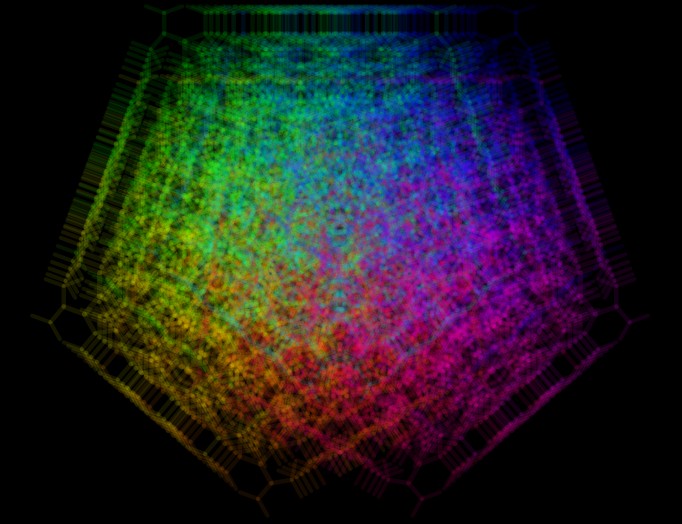Working Memory Capacity: 7 +/- 2, around 4, or ... only 1?
 Ever since Miller's estimation of short term memory capacity, confusion has grown over both whether there is a capacity limit in memory per se (i.e., the appearance of memory limitations may reflect limitations in the deployment of attention, or interference from other memorized items), and how to measure the memory limit if one exists (e.g., in terms of digits, non-words, chunks, objects, features, etc.). Cowan's 2001 article "The magical number 4 in short term memory" revised the field's best estimate of short-term memory capacity from "7 plus or minus 2" to around 4 items, based on a painstaking and comprehensive review of the literature. Yet a new article in the Proceedings of the National Academy suggests that even 4 may be an overestimation.
Ever since Miller's estimation of short term memory capacity, confusion has grown over both whether there is a capacity limit in memory per se (i.e., the appearance of memory limitations may reflect limitations in the deployment of attention, or interference from other memorized items), and how to measure the memory limit if one exists (e.g., in terms of digits, non-words, chunks, objects, features, etc.). Cowan's 2001 article "The magical number 4 in short term memory" revised the field's best estimate of short-term memory capacity from "7 plus or minus 2" to around 4 items, based on a painstaking and comprehensive review of the literature. Yet a new article in the Proceedings of the National Academy suggests that even 4 may be an overestimation.In their article, Olsson & Poom write that many studies' use of easily identifiable stimuli (for example, red- and blue-colored squares) may have led to an overestimation by contaminating the working memory capacity measurement with that of long-term memory (where your representations of red, blue, and squares are presumably activated). In order to isolate the contributions of working memory, one needs to use stimuli for which subjects' do not yet have long-term memory representations.
Olsson & Poom proceeded to design an experiment in which a sample display (13 x 13 degrees) of one to four randomly-arranged objects were presented for 500 ms each, and then after 1 second, a "test display" was presented, containing a single object in the center of the screen. This was repeated 50 times for each set size. Subjects had to decide whether that object was present in the previous display, but were each placed into one of three conditions: an "easily categorized" condition, where the stimuli had discrete shapes & colors; a "not easily categorized" condition, where the stimuli had continuous shapes (varieties of ovals) & colors (selected from a two dimensional color space with axes red/green and blue/yellow); and finally, a "difficult to categorize" condition, in which stimuli were the same ovals as in the previously described continuous dimension, but differed from each other only in terms of the relative size of a second oval that was placed inside each stimulus. The authors confirmed with piloting that all stimuli used were easily perceptually discriminable, and also confirmed that the "easily categorized" condition did indeed contain the most easily categorizeable stimuli, and the "difficult to categorize" condition contained the most difficult to categorize stimuli, with the other condition in between these two. Cowan's K formula was used to estimate capacity for each set size (again, one through four).
In the "easily categorized" condition, capacity was estimated at slightly below 3 objects (averaged across set sizes), which is lower than the standard estimate of 4 for stimuli of this type. The authors suggest that their estimate may be lower because they isolated capacity from the influence of "spatially relational" encoding by always presenting the test object centrally in a test display; in this case, relational encoding - in which objects are stored in relation to their spatial neighbors - would be uninformative.
In the "not easily categorized" and "difficult to categorize" condition, the maximum estimate of capacity for any set size was always below 2 objects. For the "difficult to categorize" condition, the estimate of capacity was actually lower for set sizes 3 and 4 than of 1 and 2, suggesting that interference between items was lowering capacity for set sizes greater than 2, and strongly suggesting that working memory capacity is around 1 item in the absence of long-term memory support.
This study has several strong implications, both theoretical and methodological:
- easily identifiable stimuli should not be used in estimates of capacity; but if traditional stimuli are used, individual differences in long-term memory must be used as a covariate to isolate WM capacity from the influence of long-term memory
- WM capacity analyses should examine the role of practice effects during testing, because long-term memory representations may form during the process of an experiment
- relational encoding may also contaminate capacity estimates, and so location information should be made uninformative (through single probe tests rather than change-detection paradigms) during measurements of WM capacity per se
One large caveat: it is possible that strategies like "relational encoding," and even the strategic use of long-term memory representations to support working memory, may be of more theoretical interest to individual difference researchers than a more pure measure of working memory. It is also almost certainly true that the traditional measurement, although probably contaminated by long-term memory, has more real-world validity than a more isolated or controlled measure of WM capacity.
Finally, it may be that strategy differences are what actually underlie individual differences, if WM capacity itself is truely limited to just a single object.
Related Posts:
Memory Bandwidth and Interference
Multiple Capacity Limitations for Visual Working Memory

 What are the cognitive effects of violence in video games? A new study by
What are the cognitive effects of violence in video games? A new study by 
 Neural activity in a given population of neurons is never the same twice, even when recording from exactly the same neurons, after exposure to exactly the same stimulus. Reassuringly, there is thought to be some static underlying "tuning curve" to which the neural population optimally responds, and any deviations from this ideal curve represent merely the noisy nature of neural processing - at least, many neuroscientists feel safe in assuming so.
Neural activity in a given population of neurons is never the same twice, even when recording from exactly the same neurons, after exposure to exactly the same stimulus. Reassuringly, there is thought to be some static underlying "tuning curve" to which the neural population optimally responds, and any deviations from this ideal curve represent merely the noisy nature of neural processing - at least, many neuroscientists feel safe in assuming so.



 Cognitive sciences and anthropology share many of the same topics of interest, but often differ vastly in terminology, methodology, and perspective. In fact, with the exception of blogs like
Cognitive sciences and anthropology share many of the same topics of interest, but often differ vastly in terminology, methodology, and perspective. In fact, with the exception of blogs like 

 In a
In a  Does memory's capacity limit (7 +/- 2 items according to Miller, but now
Does memory's capacity limit (7 +/- 2 items according to Miller, but now 
 Much recent research addresses "cognitive flexibility," which refers to the ability to flexibly switch between tasks and use mental resources appropriately. Task switching is a useful paradigm in which to measure flexibility, because people usually incur a "switch cost" - a slowing of reaction times - after switching tasks. However, as
Much recent research addresses "cognitive flexibility," which refers to the ability to flexibly switch between tasks and use mental resources appropriately. Task switching is a useful paradigm in which to measure flexibility, because people usually incur a "switch cost" - a slowing of reaction times - after switching tasks. However, as  Alan Turing
Alan Turing In many circles, video games are still considered to be a waste of time. However, recent work in cognitive neuroscience has shown that certain types of video games can result in a variety of positive changes to visual attention, hand-eye coordination, and other perceptual skills.
In many circles, video games are still considered to be a waste of time. However, recent work in cognitive neuroscience has shown that certain types of video games can result in a variety of positive changes to visual attention, hand-eye coordination, and other perceptual skills. Starting with an excellent short article at Seed magazine, a discussion across the blogosphere has focused on the contribution of fMRI technology to our understanding of the brain and cognition. While fascinating, these discussions were wide-ranging both in the topics covered and the blogs on which they were posted, making the thread rather difficult to follow. Here's what I hope is an accurate and chronological summary of the discussion so far:
Starting with an excellent short article at Seed magazine, a discussion across the blogosphere has focused on the contribution of fMRI technology to our understanding of the brain and cognition. While fascinating, these discussions were wide-ranging both in the topics covered and the blogs on which they were posted, making the thread rather difficult to follow. Here's what I hope is an accurate and chronological summary of the discussion so far:
